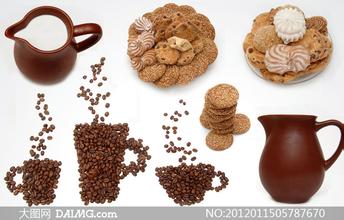Production time of Brazilian coffee beans-- introduction to the planting environment of manor producing areas pictures of Brazilian coffee trees
The picking season of Coffee in Brazil-- an introduction to the planting Environment in the Manor area
When the coffee fruit changes from turquoise to full wine red, it shows that it is ripe, but there are also some strange varieties, the ripe coffee fruit appears yellow. The coffee fruit looks like cranberries or cherries, but the shape is closer to the oval. Coffee farmers usually judge whether the coffee fruit is ripe by pinching the coffee fruit with the thumb and index finger. If the coffee bean is squeezed out with a gentle pinch, it proves that the coffee fruit is ripe. The ingredients left in the hand after the coffee beans are squeezed out are red peel and pulp. What is squeezed out is the seed coat and the mucus adhered to it. Inside the seed coat are two coffee seeds wrapped in translucent silver skins. The vigorous production period of a coffee tree usually lasts about 15 years. Of course, some trees are still fruitful for 20 or 30 years. As soon as the coffee tree loses its ability to bear fruit, it will be cut down on the spot and uprooted so as not to compete for nutrients with other trees that are still strong and can bear fruit. Coffee yield is related to the species and growing environment of coffee trees. On average, a coffee tree can produce 5 pounds of coffee fruit a year, and eventually harvest about 1 pound of dried coffee beans.
Coffee trees are usually bred in nurseries, grow into seedlings, and then moved to coffee plantations a year later, in full compliance with the original Arab method of planting and cultivating coffee trees. In the first four or five years of its growth, the coffee tree will continue to take root downward, develop its trunk upward, and develop into an umbrella shape so that it can bear rich fruit in the future.
Before long, small fruits appear in piles, first green, then yellow, then red or crimson, and can be picked almost black. In Jamaica, bats are the first to know whether the fruit is ripe or not. by sucking coffee pulp at night, they are telling people that the fruit is ripe and ready to be picked. The oval fruit gathers tightly around the branches, with slender, smooth dark green toothed leaves on both sides of the branches. The leaves on the sunny side are harder, the back is softer, the edges are fan-shaped, and the branches are opposite from the trunk.
The coffee tree has delicate white flowers that smell like oranges and jasmine. Sometimes it is just a tree blooming alone, like a young bride, sometimes the whole coffee garden is in full bloom, it looks like a sea of white flowers, beautiful and intoxicating. But the florescence is fleeting. Within two or three days, the petals dispersed with the wind, leaving only the remaining fragrance spinning in the air.

Important Notice :
前街咖啡 FrontStreet Coffee has moved to new addredd:
FrontStreet Coffee Address: 315,Donghua East Road,GuangZhou
Tel:020 38364473
- Prev

Flavor characteristics of Snow Mountain Coffee in Colombia Variety introduction of Regional treatment method for manor production
Columbia Snow Mountain Coffee Flavor characteristics Manor Regional treatment Variety introduction as it is the first attempt, the overall feeling of coffee is not at its best. Mainly presented in the front taste is a little dirty, but the dried fruit flavor is very obvious. At the same time, we are surprised that although it is light baking, the acidity is not very high. The aftertaste is quite obvious, although there is one.
- Next

Description of the flavor of bright and crisp Sidamo G3 flavor coffee beans introduction to the characteristics of manor treatment
Ethiopia Sidamo G3 Coffee Bean Flavor description Variety characteristics of Ethiopia Sidamo G2 (Sidamo G2): the Sidamo producing area is located in the south of Ethiopia, extending to the administrative districts of Arsi and Bale in the east and Gamogofa in the west. Sidamo coffee is cultivated between altitude 1400m-2000m. The industry here is mainly agriculture, coffee.
Related
- Detailed explanation of Jadeite planting Land in Panamanian Jadeite Manor introduction to the grading system of Jadeite competitive bidding, Red bid, Green bid and Rose Summer
- Story of Coffee planting in Brenka region of Costa Rica Stonehenge Manor anaerobic heavy honey treatment of flavor mouth
- What's on the barrel of Blue Mountain Coffee beans?
- Can American coffee also pull flowers? How to use hot American style to pull out a good-looking pattern?
- Can you make a cold extract with coffee beans? What is the right proportion for cold-extracted coffee formula?
- Indonesian PWN Gold Mandrine Coffee Origin Features Flavor How to Chong? Mandolin coffee is American.
- A brief introduction to the flavor characteristics of Brazilian yellow bourbon coffee beans
- What is the effect of different water quality on the flavor of cold-extracted coffee? What kind of water is best for brewing coffee?
- Why do you think of Rose Summer whenever you mention Panamanian coffee?
- Introduction to the characteristics of authentic blue mountain coffee bean producing areas? What is the CIB Coffee Authority in Jamaica?

